Bird’s nests (the fungal sort)
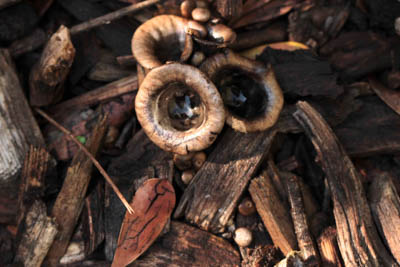
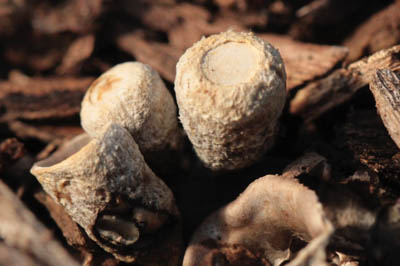
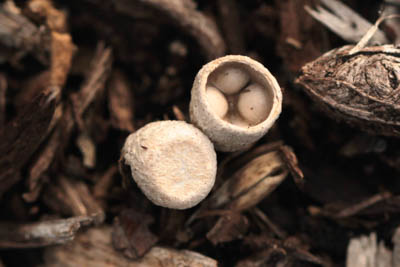
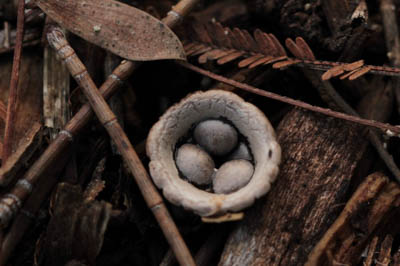
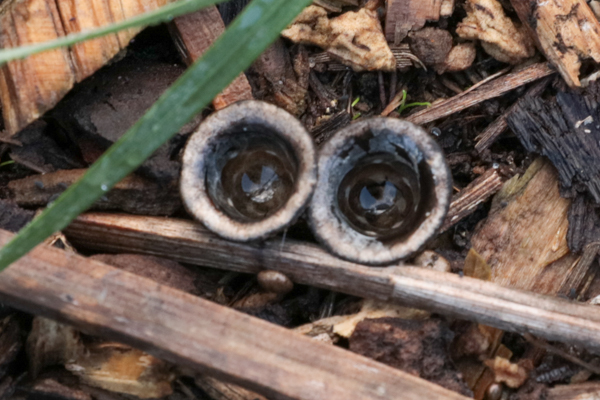
Cyathus Olla
The fungi we see above ground are the sporing bodies – much like fruit on plants – and they disperse tiny spores to produce the next generation. Methods of dispersal are hugely diverse and, in this, Bird’s nests are particularly interesting.
Shaggy receptacles, about 15mm in diameter, push up to the surface and the cap comes off to reveal 4 or 5 flattened egg-shaped sacs – peridioles – inside which are the spores. While most fungi use wind for dispersal Bird’s nests await rain drops to fall on their cup and the peridioles are ‘splashed out’. These can land a meter or so away. Cyathus peridioles are attached to a fine thread which is sticky and can adhere to grass stalks which are in turn eaten by animals, thus spreading spores further through dung.
